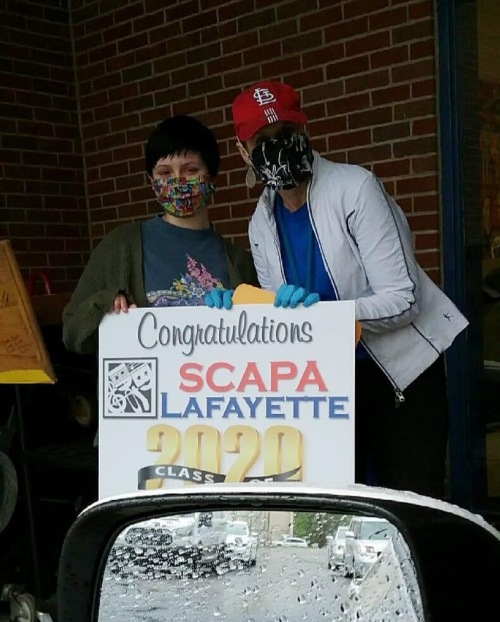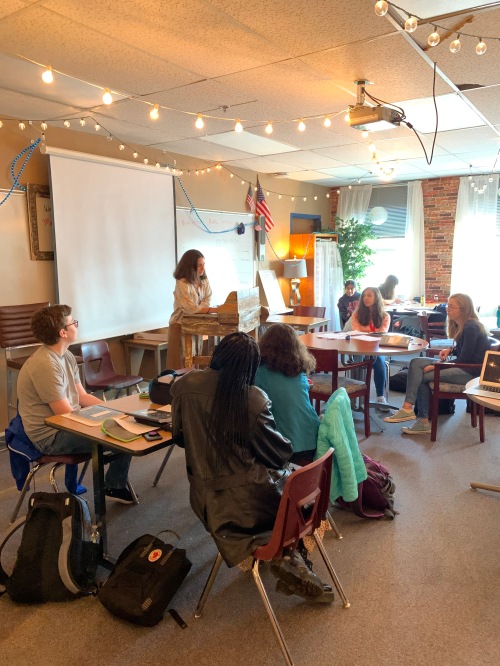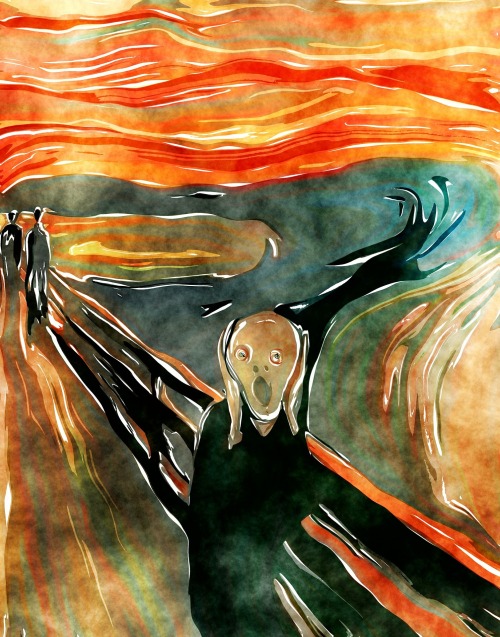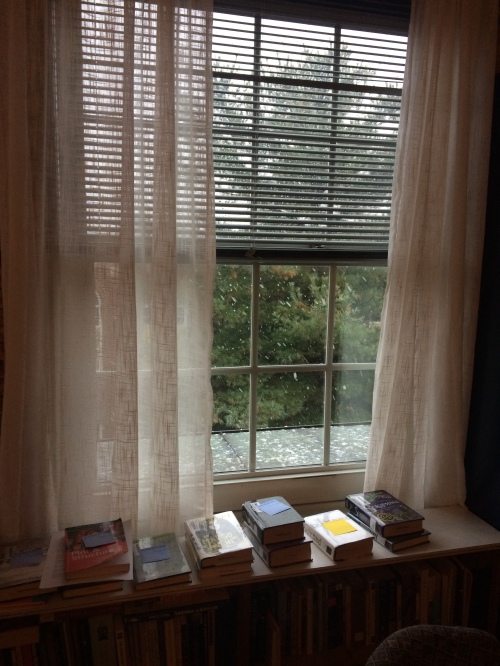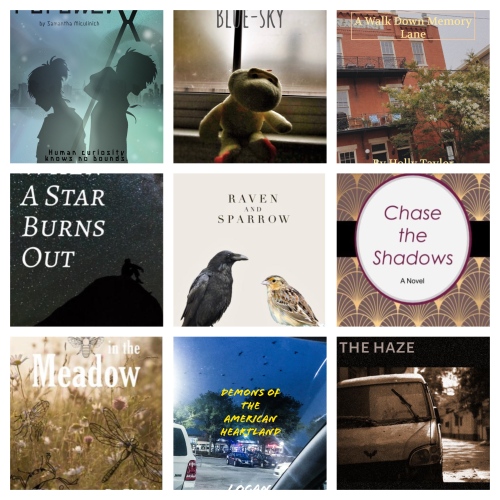
Saturday night at midnight, the 22 young writers in my first block class will launch into the National Novel Writing Month, known as NaNoWriMo, a thirty-day gauntlet to write 50,000 words of a novel. The past two weeks, we’ve crafted character charts, tested out working titles, designed book covers, and written popping taglines and loglines. We’ve plotted dozens of scenes and sequences to sustain us through the month. We even read about the habits of novelists. On Monday, we talked about different plotting systems, and I told them about visiting William Faulkner’s home in Oxford, Mississippi. My favorite part was seeing the plot of his 1954 novel A Fable sketched out on the wall in his study. As we prepped for this gauntlet, there’s been a palatable excitement in my students. They’re nervous about whether they can do it, but excited about the prospect of challenging themselves.
I’m glad they’re looking forward to it. This week has been difficult. The school district where I teach has been 100% virtual since August. We’ve had two will-we-or-won’t-we board meetings on Facebook Live, and finally, on Monday night, the board said, enough. We’ll be virtual until January with some targeted intervention services for kids who are really struggling.
With the exception of a group of protestors who are still pushing for a return to in-person school, there was a collective sigh of relief that passed through the district. We are in a rhythm online now. Students are showing up; they’re participating. Parents have called me and sent encouraging emails; they’ve had their child up, fed, and ready to roll at 8 am. It’s not ideal, but it’s better than the nightmares we’ve all heard from teachers in other districts teaching hybridly.
And yet, Tuesday morning on Zoom, it seemed to dawn on my students they wouldn’t be back with their friends for the rest of the year, which in high school time seems like forever. They seemed weary like I’d never seen them before.
The days are getting shorter; it’s getting darker earlier. This week, the remnants of Zeta moved into central Kentucky, and a cold steady rain has been knocking fall leaves to the ground. Our state’s COVID-19 cases have exploded. On television, political ads are relentless. The most contentious political election of my lifetime is four days away. No one knows when any of it will end.
All of these stressors coalesced this week. Several asked to stay after class and talk about the pressure they were feeling. Two students told me they’d reached out to our school’s mental health services. Another student told me she feels like all she does is school all day. She goes to bed overwhelmed and gets back up the next morning to do it all over again.
This summer my book club read Emily St. John Mandel’s Station Eleven, a novel that follows the Traveling Symphony, a group of actors and musicians, as they travel around the United States after a pandemic has wiped out most of humanity. The Symphony visits outposts and settlements, performing Shakespeare, keeping the arts and humanity alive in a world dominated by merely surviving. Kristin, one of the performers, gives voice to a line that has haunted me during our own COVID lock down: “Hell is the absence of the people you long for.” Another theme of the book and the reason that the Symphony keeps traveling and performing even though it’s dangerous to do so is summed up by Dieter, one of the actors, who quotes Star Trek: “Survival is insufficient.”
This year has been too much about merely surviving. This week, two different teacher friends sent me this article: “Your Surge Capacity is Depleted.” It was published in August, a lifetime ago.
I, too, am overwhelmed.
Which brings me to NaNoWriMo.
Yesterday I met with each of my students for ten-minute Zoom conferences to discuss their writing goals and to field any last minute questions, to quell any anxiety. It was a long day, sitting in front of my computer for four straight hours, but it’s an important part of what I do. Touching base, keeping connected.
One of the last students I met with was Marie, a passionate, energetic, and totally game ninth grader who has never done NaNoWriMo. She was slow to come up with an idea and told me she didn’t even like plotting all that much, but in the last two weeks, she got an idea for a novel that featured two of her favorite things: the 80s and child actors.
The Zoom doorbell rang as she connected to the call. I clicked Admit to move her from the waiting room. Her audio connected slowly, then her blank video feed stabilized, then opened. I fiddled with my USB port, waiting for my wireless headphones to connect.
“Hey.” Her voice was small and far away.
“Hey Marie. What’s up?” I smiled into the webcam.
She waved. She was sitting on her bed in her bedroom.
And there, on the wall behind her, were rows upon rows of index cards taped above her bed. My heart caught in my throat.
“What’s that on the wall behind you?” I said.
“My plot.”
Every year, my students jump into NaNoWriMo together in Room 303 on the third floor of Lafayette High school. But on Saturday night at midnight, 22 writers, separated from each other and isolated in their homes, will be sitting in their bedrooms all across Lexington. They will open their laptops and join each other and thousands of other writers all across the US to create something in spite of it all.
Survival is insufficient. 2020, we’re coming for you.
